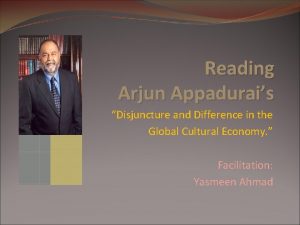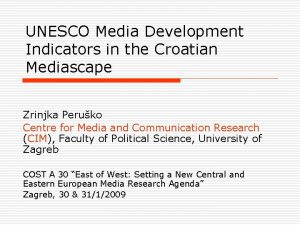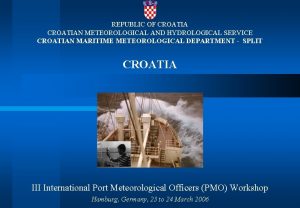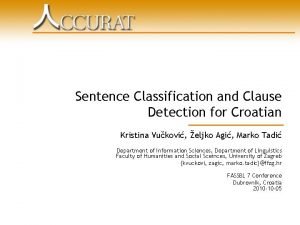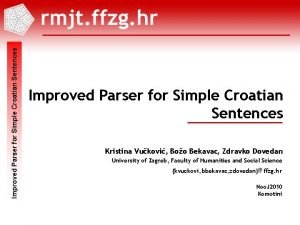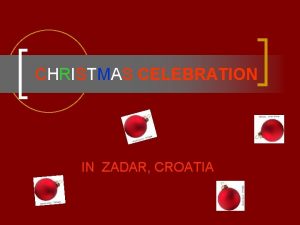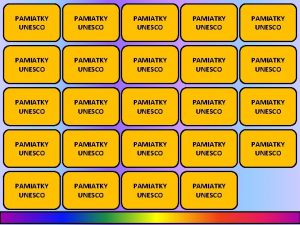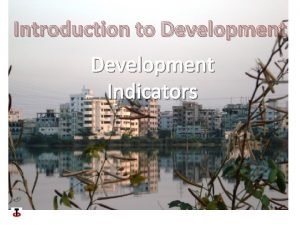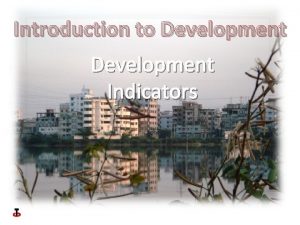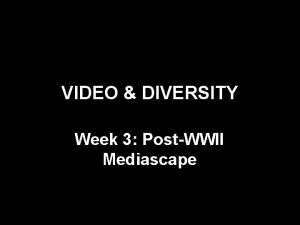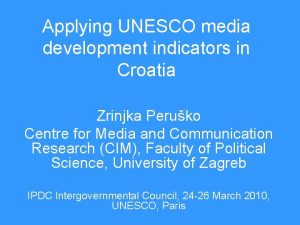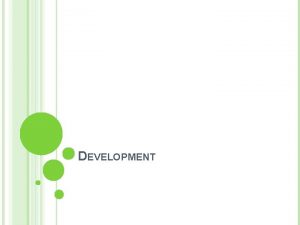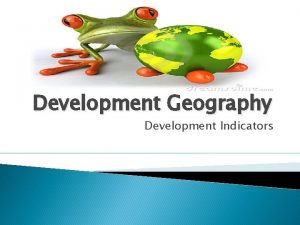UNESCO Media Development Indicators in the Croatian Mediascape









- Slides: 9

UNESCO Media Development Indicators in the Croatian Mediascape Zrinjka Peruško Centre for Media and Communication Research (CIM), Faculty of Political Science, University of Zagreb COST A 30 “East of West: Setting a New Central and Eastern European Media Research Agenda” Zagreb, 30 & 31/1/2009

Monitoring media development o o o At least 26 initiatives world-wide Different levels of geographic scope Varied aims and content-categories: n n n o Media freedom Media pluralism & diversity Media infrastructure development Media development – media system level, not media organization

Data types and procedures: qualitative (inter-subjective) o o o Panel of media professionals judge/evaluate the development of different indicators, quantification: scale is then averaged (validity depending on the selection of panel and indicators quality) Self-assessment questionnaire, supported by documentation (laws, studies) Questionnaire to government bodies, no definite source of opinion In depth interviews Focus groups

Data types and procedures: quantitative (caveat: comparability) o o Statistics: official - size and development of the media sector – radio, television, newspapers, telephone, new media Market research - audiences, circulations, advertising revenues Media’s own data Independent studies – q&q

Composite indicators o o o World Bank – variables from 32 separate data sources worldwide UNDP – communication index - correlating indicators of per capita circulation of daily papers, distributions of radio and TV sets; proportion of population online, weighted distribution of Internet hosts UNESCO Media development indicators

UNESCO: Crucial conditions for democratic contribution of the media o o o Independence of the media Access of the public to the media Freedom of expression, pluralism & diversity (of content) Professional capacities of media workers Infrastructural capacities

CATEGORIES OF INDICATORS 1. 2. 3. 4. 5. A system of regulation conductive to freedom of expression, pluralism and diversity of the media Plurality and diversity of media, a level economic playing field and transparency of ownership Media as a platform for democratic discourse Professional capacity building, and supporting institutions, that underpins freedom of expression, pluralism and diversity Infrastructural capacity is sufficient to support independent and pluralistic media

Aims of the Croatian study o o o Indicators – categories & normative benchmarks –media performance expectations Comprehensive map of the Croatian mediascape Longitudinal (New Media Agenda, 1998) Comparative Identify missing data Compare UNESCO media development indicators to other approaches to media system analysis

Plurality and diversity of media, a level economic playing field and transparency of ownership o o o Media Concentration A Diverse Mix of Public, Private and Community Media Licensing and Spectrum Allocation Taxation and Business Regulation Advertising
